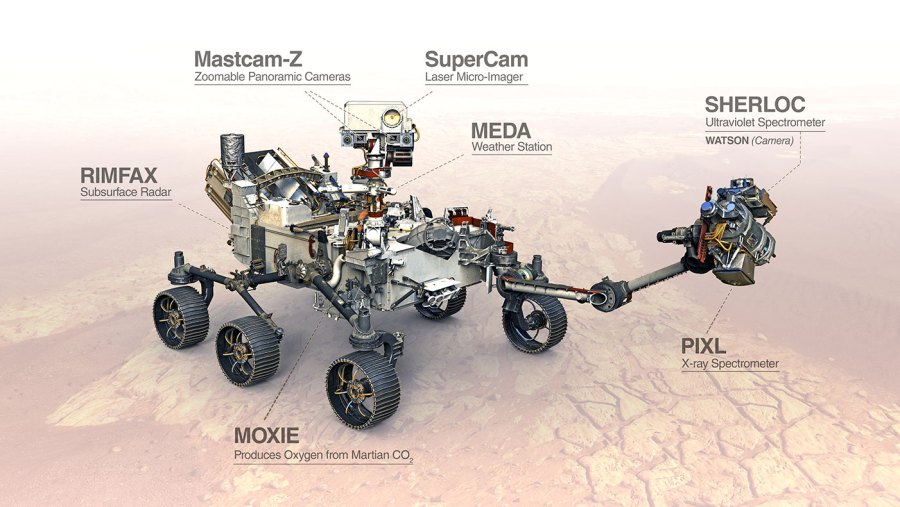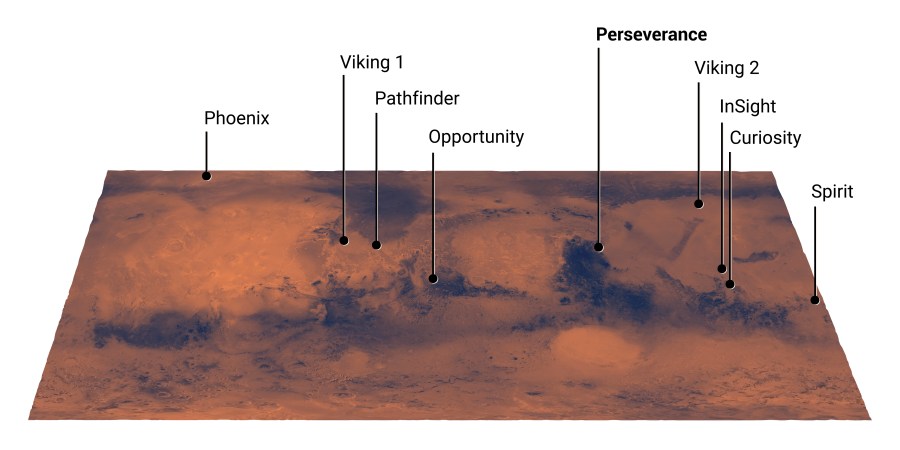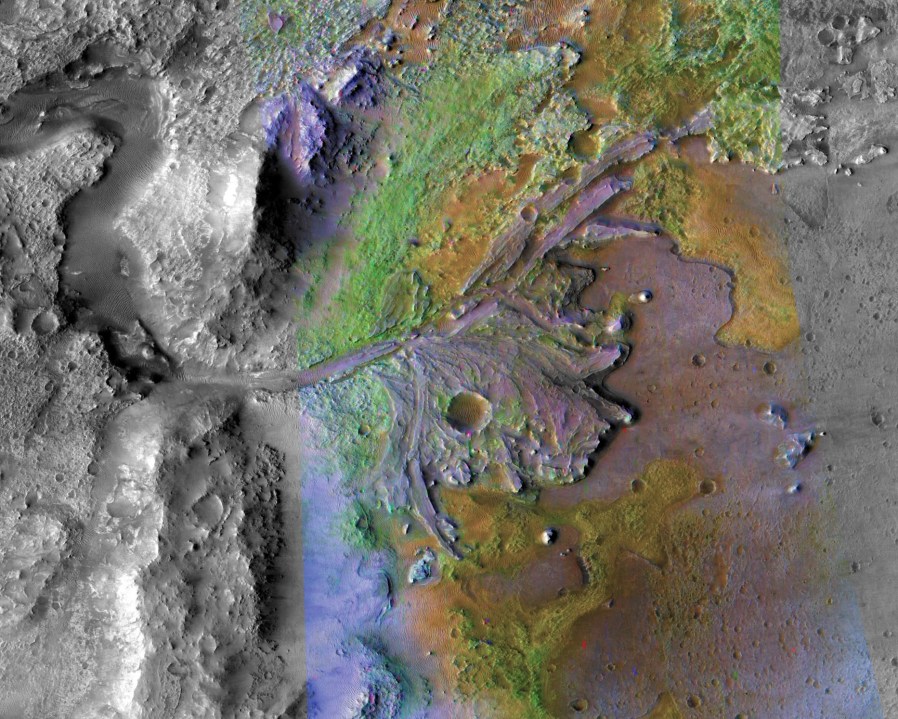NASA’s Perseverance rover, set to land on Mars on Thursday and look for signs of ancient life on the red planet, was designed, built and managed in Los Angeles’ backyard: Jet Propulsion Laboratory near Pasadena.
The Mars 2020 team is made up of scientists and engineers from all over the world. Experts in multiple disciplines came together to bring the latest rover to life and complete an important mission in the future of space exploration.
The 293 million-mile journey to Mars was preceded by a February 2020 trip from the JPL campus on the edge of the San Gabriel Mountains to Cape Canaveral in Florida, where Perseverance launched in July.
Perseverance’s space voyage will conclude when the rover blazes through Mars’ atmosphere at about 12,100 mph. The final descent should take about seven minutes, with the rover expected to touch down around 12:55 p.m. PT Thursday.
Here’s what you need to know ahead of the historic landing.
Was Mars ever alive? Perseverance’s goals
The latest mission to Mars has five goals that the rover is designed to achieve.
The Perseverance will work to determine whether life ever existed on Mars by focusing on the Jezero Crater, which has signs of an ancient lake and delta where scientists believe microorganisms could have existed and been preserved.
The rover will also characterize the climate and geology of Mars, and collect samples for a future mission to bring back to Earth.
Finally, the rover will test technologies for future missions on the red planet, be they robotic or human.
How is this mission different?
NASA has seen a total of eight successful landings on Mars, including five rovers.
Dating back to 1975’s Viking 1 and 2, to 2018’s InSight, each mission discovered new aspects of Mars — from the existence of water and weather patterns, to evidence of past habitable environments.
Now, the Perseverance rover will focus on signs of past microbial life. It is equipped with seven primary instruments including specialty cameras that will record images of Mars and help collect samples.
And for the first time, a helicopter, Ingenuity, will hitch a ride on the Perseverance to determine future flights over the the red planet’s rugged terrain and thin air. And, in another first, microphones will allow us to hear the sounds of Mars and the rover itself.

Each unique part was designed by a different team member. The rover has a variety of imaging technologies, including subsurface radar and an X-ray spectrometer, and can even produce oxygen from martian carbon dioxide.
Perseverance is car-sized and based on the Curiosity rover’s configuration: it is about 10 feet long, 9 feet wide and 7 feet tall.
Why the Jezero Crater
The Perseverance rover launched from Cape Canaveral Air Force Station in Florida on July 30, 2020, and will be exploring the Jezero Crater when it lands on Thursday. (You can follow along where the rover is here.)
The rover will explore that area in detail because it has signs that it was friendly to past life.
The Jezero Crater is 28 miles wide and is located on the western edge of a flat plain called Isidis Planitia, just north of the Mars equator. Perseverance’s landing site is about 2,300 miles from Curiosity’s 2012 landing site in the Gale Crater.

Due to meteoric impacts, the site has shown evidence of an ancient river flow, which formed a delta that has long since dried, but where there might still be signs of life.
“We’re very optimistic that this is the right place to go to search for signs of ancient life,” Deputy Project Scientist Katie Stack Morgan told KTLA’s Frank Buckley.
The Perseverance team has divided the landing site into squares, and each square will be named to match national parks and preserves on Earth with similar geology. And as a nod to the diversity of the team, the plan is to find matching sites in countries that have contributed to the mission. As the rover explores the crater, any time team members see an interesting feature, they will name it for a corresponding location on Earth.

Looking ahead
Perseverance’s mission will last at least one Mars year, which is about 687 days on Earth.
Upon landing, the rover will begin to explore the landing site region and collect samples to one day bring back to Earth. That includes:
- Finding rocks that formed in, or were altered by environments that could have supported microbial life on the red planet.
- Finding rocks that were capable of preserving chemical traces of ancient life.
- Drilling and collecting core samples from about 30 promising rock and soil (or regolith) targets.
- Testing the ability to produce oxygen from the carbon dioxide atmosphere on Mars to determine if future human missions could be possible.
The collected samples will remain on Mars until another mission can pick them up. Since that could take a while, the rover is designed to protect these samples for years.
“The payload of Perseverance is really well suited to identifying potential biosignatures, but it’ll likely take the full laboratory capabilities that we have here on Earth to make that conclusive decision,” Stack Morgan said.
And that could take up to a decade, she followed.
The first opportunity to have another landing on Mars could be in 2026 to 2027, and that would mean having the samples return by 2030.
Further reading:
- Frank Buckley Interviews‘ conversation with two members of the NASA Jet Propulsion Lab team: broadcast and podcast.
- KTLA’s “Perseverance: Mission to Mars… Race to the Red Planet,” Episodes 1 through 6.
- Watch the landing live on KTLA, KTLA.com, the KTLA 5 app or live on NASA’s YouTube page.





















